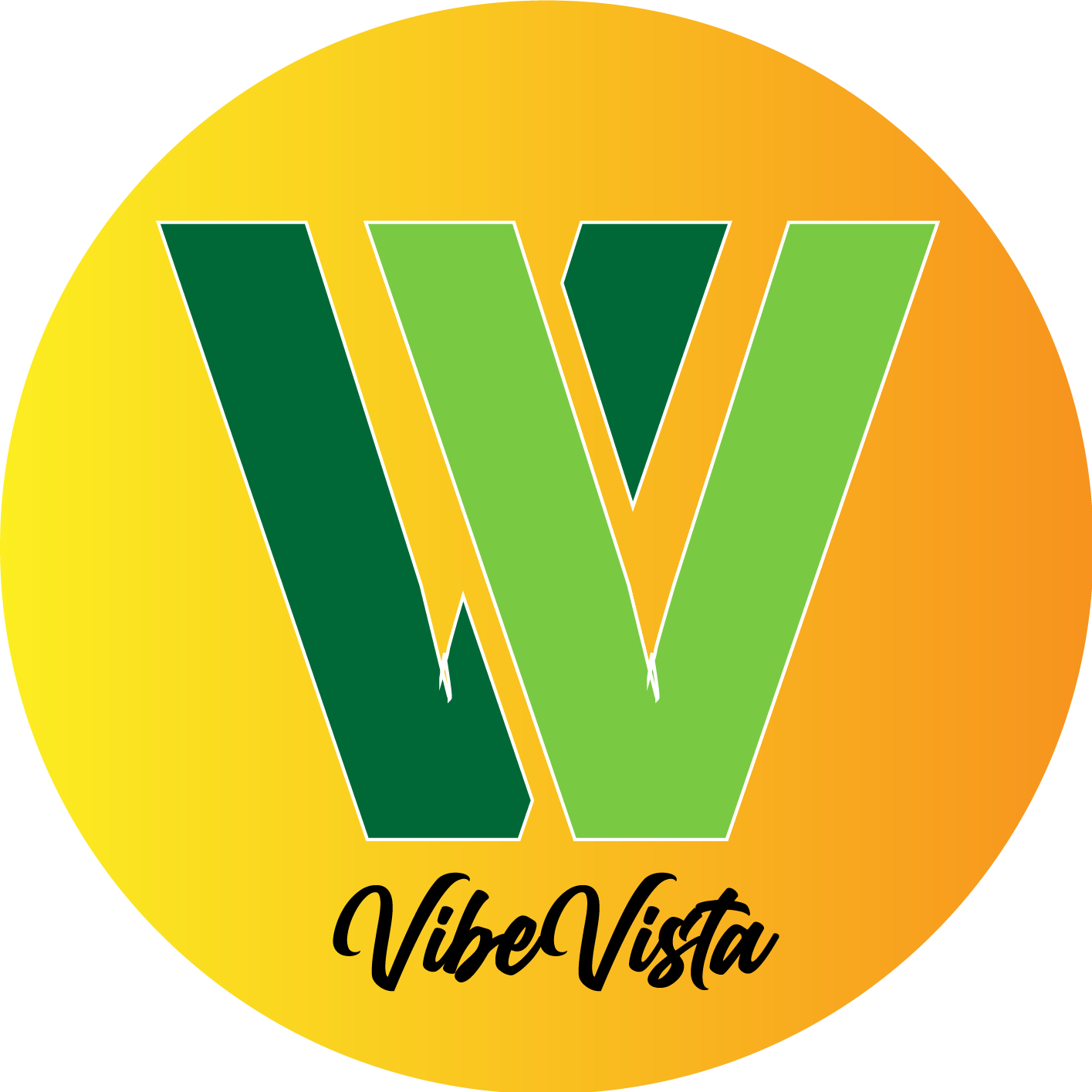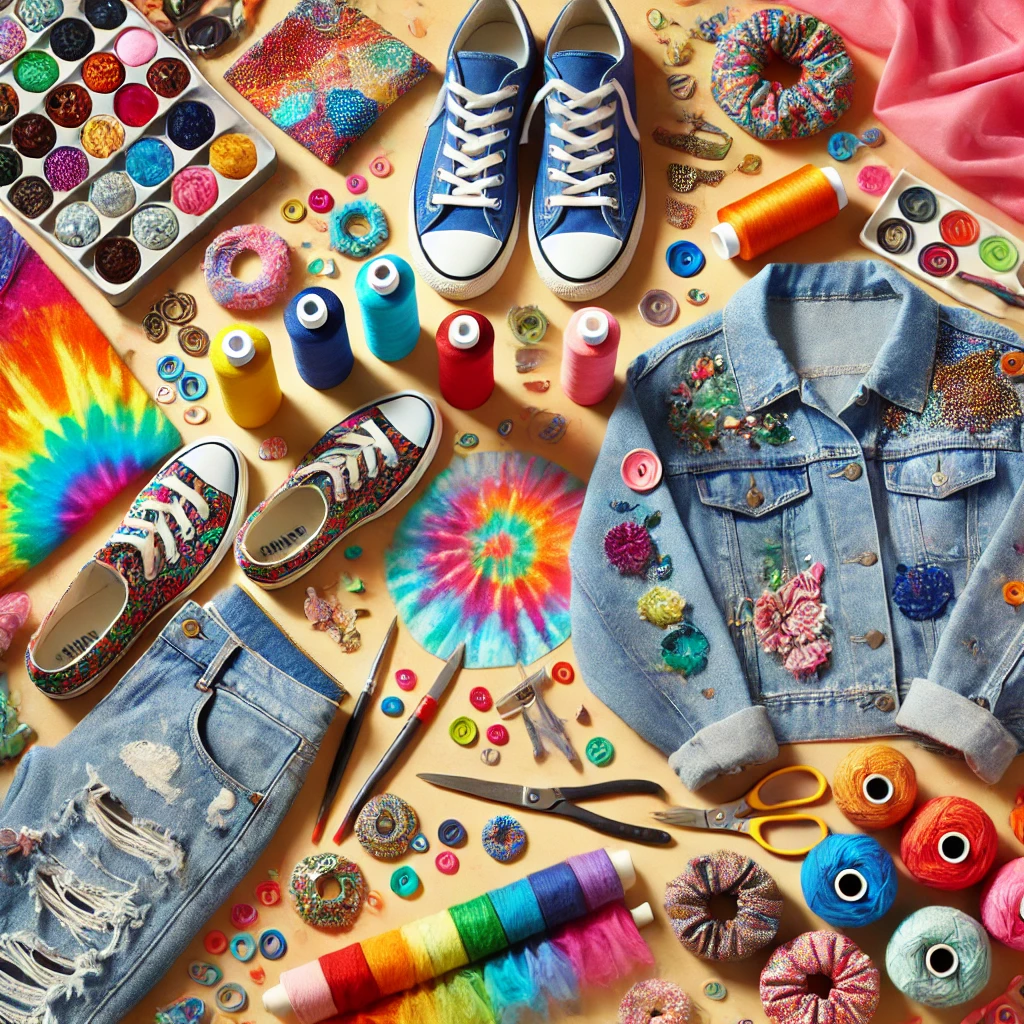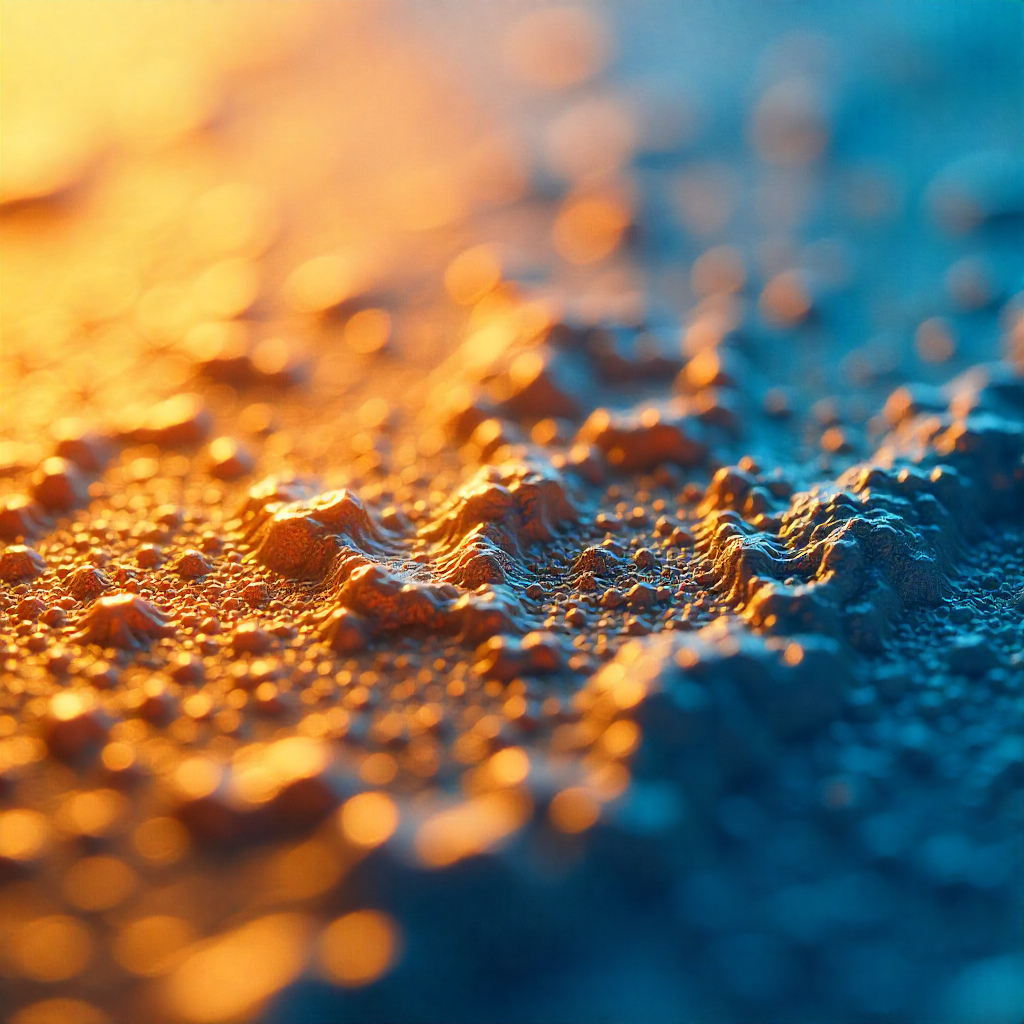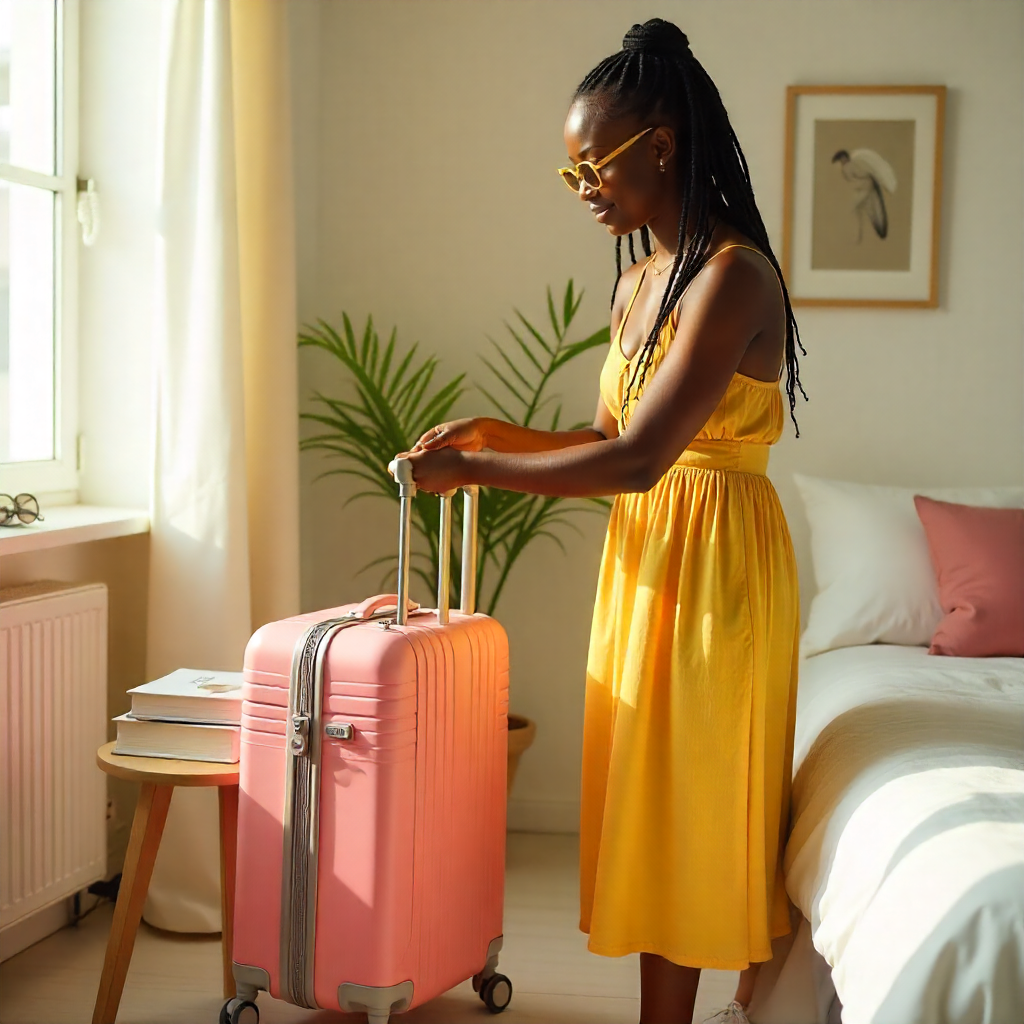Because of fast fashion and constant trends, today, DIY fashion has become an incredibly creative and sustainable way to express oneself. Creating or modulating clothes and accessories by one’s creativity and imagination is “DIY fashion.” Actually, it’s a matter of embracing individuality with eco-friendliness, cost-effectiveness, and originality. Of course, DIY fashion can be upcycling old clothes, even creating custom accessories or designing complete outfits.
In this article, we will outline a walk-through of what DIY fashion is, its benefits, tips on getting started, and some exciting project ideas.
What is DIY Fashion?
This term ‘Do-It-Yourself’ fashion refers to the art of making or altering clothes and accessories by hand. It reaches further towards a variety of activities like knitting, embellishing, customizing, and changing the use of garments. DIY fashion gives one the power to be in control of his or her style, creating pieces that demonstrate their character. Simple things like patching up old jeans are examples of fixing, while creation of an entirely new outfit is a different example of DIY fashion-influenced innovation and self-expression.
Why DIY fashion is so popular
Growing awareness of the unsustainable nature of fashion-waste pollution has turned many to DIY fashion for an alternative. Away from ever more mass-produced items available on the high street, persuading them to dump their fast-fashion wardrobes for sustainable and eco-friendly clothes made at home, DIY is now the perfect answer to challenges posed by fast fashion. Not to mention, the growing impact of social media, like Instagram and Pinterest, has provided a perfect platform for showcasing DIY projects to inspire people to try out their designs and creations.
Advantages of DIY Fashion
There are several reasons why one should consider embracing DIY fashion:
1. Tailoring to Personal Style
DIY fashion allows you to make products that uniquely express yourself, including your personality and preferences for style. You can shape the garments exactly to fit your body, try out different textures of fabric, and even add special details such as embroidery or prints. This way, your wardrobe will be a true expression of individuality.
2. Eco-Friendly and Sustainability
Fast fashion also brings forth pollution from the environment. Making DIY fashion reduces new clothing production demands and minimizes waste in textiles as you can upcycle worn garments or materials for reuse. Thus, it makes DIY fashion an ecologically conscious choice.
3. Cost-Effective
It is expensive to keep purchasing new clothes and, to boot, follow trends and fashions. DIY fashion is a much cheaper alternative. You can revive old clothes, thrift store finds, or fabric scraps and be safe in the knowledge of being fashionable while saving on some money for little basics. You can create different outfits with a fraction of the cost using just basic tools and materials.
4. Development of Skill
Not only is DIY fashion fun, but it’s also a fantastic way to develop new skills in sewing, knitting, or design. And these are indeed the invaluable life skills that can be carried out into many other creative endeavors. Whether you are learning how to sew buttons or try making a dress from scratch, every DIY project brings out the best of your craftsmanship.
5. A Feeling of Fulfillment
There is satisfaction in wearing something that you have made by your own hands. Satisfaction and pride resulting from completing a DIY fashion project with the very hands win all competition. Every compliment you receive regarding your original creations speaks volumes of your creativity and hard work.
To begin with DIY Fashion
Sometimes, it is good to start off with small pieces and build up when working with DIY fashion. Here’s how you can get started:
1. Prepare The Essential Tools and Materials
Be sure that you have the right tools set up before starting your DIY fashion project. Some essentials include:
Sewing machine (optional but helpful for greater projects)
Different kinds of needles and threads
Scissors designed for cutting fabrics
Measuring tape for accurate measuring
Pins and pin cushion to hold fabric in place
Iron and ironing board to press seams
2.Fabric adhesive for no-sew projects
Depending on your project, you will also need additional things such as fabrics, patches, buttons, zippers, and other embellishments such as beads and lace.
3. Select Easy Projects
If you are a beginner, begin with simple projects that won’t require a lot of advanced sewing skills. Here are some cool easy ideas that you can try your hand at doing:
Customization of T-shirts: Apply some patches, fabric paint, or embroidery to plain T-shirts.
Distressing of Denims: Use scissors and the sandpaper to create a trendy look on old jeans or shorts.
Fabric Tote Bag: Convert your fabric scraps or use old clothes to make a reusable tote bag.
Scarf or Headband: Make fashionable accessories by making scarves or headbands from old clothes.
4. Learn through Tutorials
There are many tutorials and instructions via the internet for doing DIY clothes. YouTube, Pinterest, and most DIY fashion blogs can be a great source for inspiration and guidance. You can start off with beginner-friendly pieces and get back on track with more complex designs.
5. Try out sewing and stitching techniques
Sewing is probably one of the most fundamental skills in DIY fashion; once done, it will open a world of creativity within you. To begin with sewing, start practicing different types of stitches: running stitch, backstitch, and zigzag stitches, for example.
Larger projects require an investment in a proper sewing machine, then some time to learn how to use it.
DIY Fashion Project Ideas
Not all of this projects in fashion are complex or stitching-related. These are some interesting ideas to get started with:
I guarantee that you haven’t thought about these.
Here are some good creative projects to get you started on your DIY fashion journey:
1. Upcycled Denim Jacket
Take an old denim jacket and do some patches, embroidery, or fabric painting. You can even sew on decorative buttons or beads to make it really interesting.
2. Tie-Dye T-Shirts
There are many ways to produce colorful and interesting T-shirts, and one of the most entertaining and easy methods to create unique patterns and designs is through the technique of tie-dye.
3. No-Sew Skirt
If you are not ready to use a sewing machine, then you can make a no-sew skirt. To do that, all you will need is the fabric, fabric glue, and an elastic waistband. That’s it-you simply cut the length you want, glue up the edges, and you have a fashionable skirt.
4. Fabric Scrunchies
Scrunchies are another trendy, and extremely practical accessory easily made from fabric scraps. With minimal elastic and some fabric, it’s possible to create ideal scrunchies matching the outfits.
5. Hand Painted Shoes
Canvas shoes may sound like a thing of the past, but some creativity with fabric paint will give you back life in them. A unique design, pattern, or even theme will help you create one-of-a-kind custom footwear.
The Future of DIY Fashion
Hailed as an important opportunity for waste reduction, individuality, and the acquisition of practical skills, this type of fashion is going nowhere but up as concern over the sustainability of the fashion industry continues to grow.
Nowadays, online resources, tutorials, and this type of kits are just a click away. Therefore, entering the world of DIY fashion has become a no-brainer. Added to this, an increasing desire to be different and the rising trend of sustainable practices solidifies the fact that DIY fashion has truly reached its prime.
Conclusion
What’s great about this fashion is the creativity it encourages, as well as the monetary savings, and making some of the most environmentally friendly choices. Upcycling old clothes or coming up with new designs from scratch, DIY fashion allows you to have control over your wardrobe and be an independent expression of your unique style. If you have the proper tools and the basic sewing skills, you only need to add a little inspiration to become a DIY fashionista.
So, go ahead, start your DIY fashion journey today. Leap into your closet, grab that fabric, and just let your imagination run wild!












